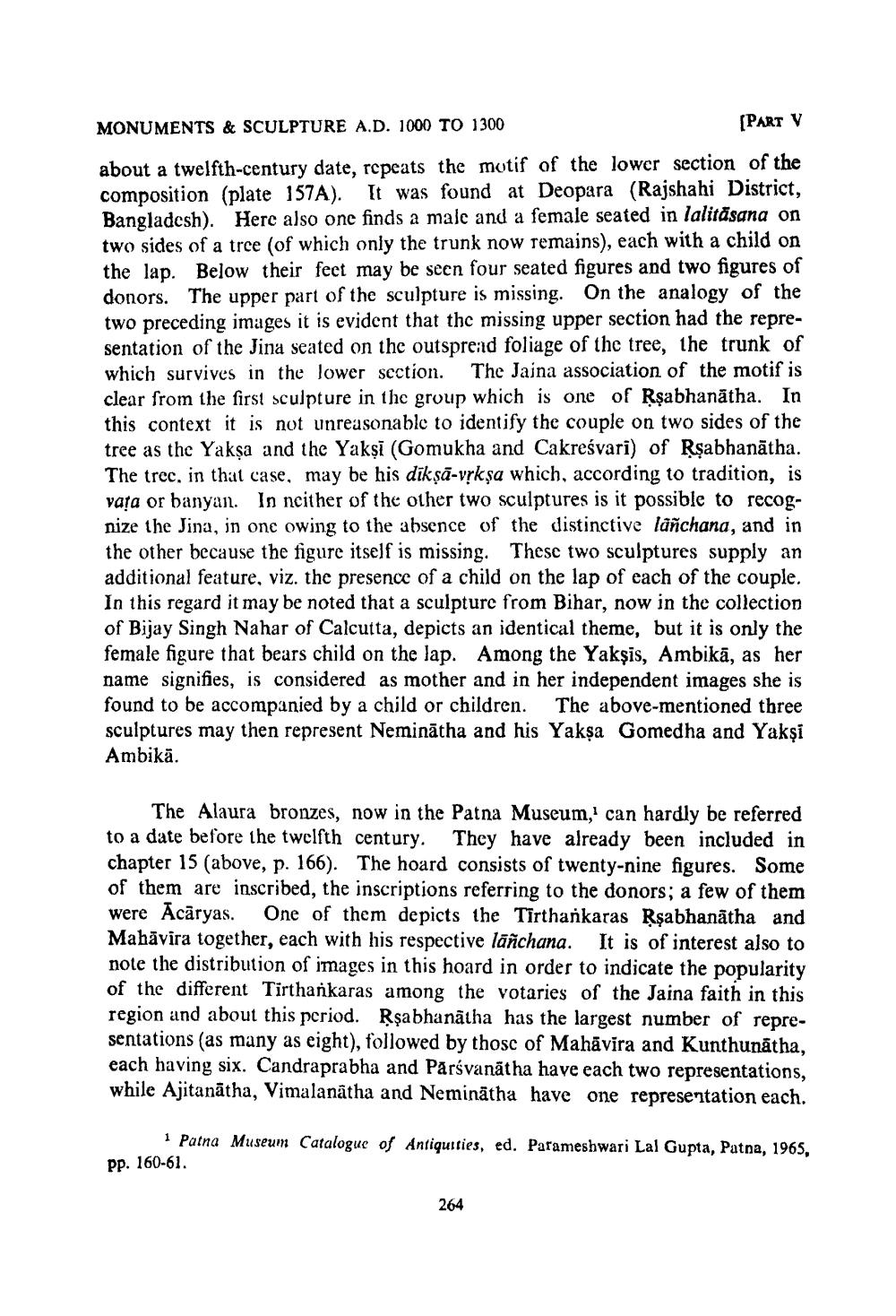________________
MONUMENTS & SCULPTURE A.D. 1000 TO 1300
[PART V
about a twelfth-century date, repeats the motif of the lower section of the composition (plate 157A). It was found at Deopara (Rajshahi District, Bangladesh). Here also one finds a male and a female seated in lalitäsana on two sides of a tree (of which only the trunk now remains), each with a child on the lap. Below their feet may be seen four seated figures and two figures of donors. The upper part of the sculpture is missing. On the analogy of the two preceding images it is evident that the missing upper section had the representation of the Jina seated on the outspread foliage of the tree, the trunk of which survives in the lower section. The Jaina association of the motif is clear from the first sculpture in the group which is one of Rṣabhanatha. In this context is not unreasonable to identify the couple on two sides of the tree as the Yakṣa and the Yakṣi (Gomukha and Cakreśvari) of Rṣabhanatha. The tree, in that case, may be his dīkṣā-vṛkṣa which, according to tradition, is vata or banyan. In neither of the other two sculptures is it possible to recognize the Jina, in one owing to the absence of the distinctive lañchana, and in the other because the figure itself is missing. These two sculptures supply an additional feature, viz. the presence of a child on the lap of each of the couple. In this regard it may be noted that a sculpture from Bihar, now in the collection of Bijay Singh Nahar of Calcutta, depicts an identical theme, but it is only the female figure that bears child on the lap. Among the Yakşis, Ambikā, as her name signifies, is considered as mother and in her independent images she is found to be accompanied by a child or children. The above-mentioned three sculptures may then represent Neminatha and his Yakṣa Gomedha and Yakşi Ambikā.
The Alaura bronzes, now in the Patna Museum,' can hardly be referred to a date before the twelfth century. They have already been included in chapter 15 (above, p. 166). The hoard consists of twenty-nine figures. Some of them are inscribed, the inscriptions referring to the donors; a few of them were Acaryas. One of them depicts the Tirthankaras Rşabhanatha and Mahavira together, each with his respective lañchana. It is of interest also to note the distribution of images in this hoard in order to indicate the popularity of the different Tirthankaras among the votaries of the Jaina faith in this region and about this period. Rşabhanatha has the largest number of representations (as many as eight), followed by those of Mahavira and Kunthunatha, each having six. Candraprabha and Parsvanatha have each two representations, while Ajitanatha, Vimalanatha and Neminatha have one representation each.
1 Patna Museum Catalogue of Antiquities, ed. Parameshwari Lal Gupta, Patna, 1965,
Pp. 160-61.
264




